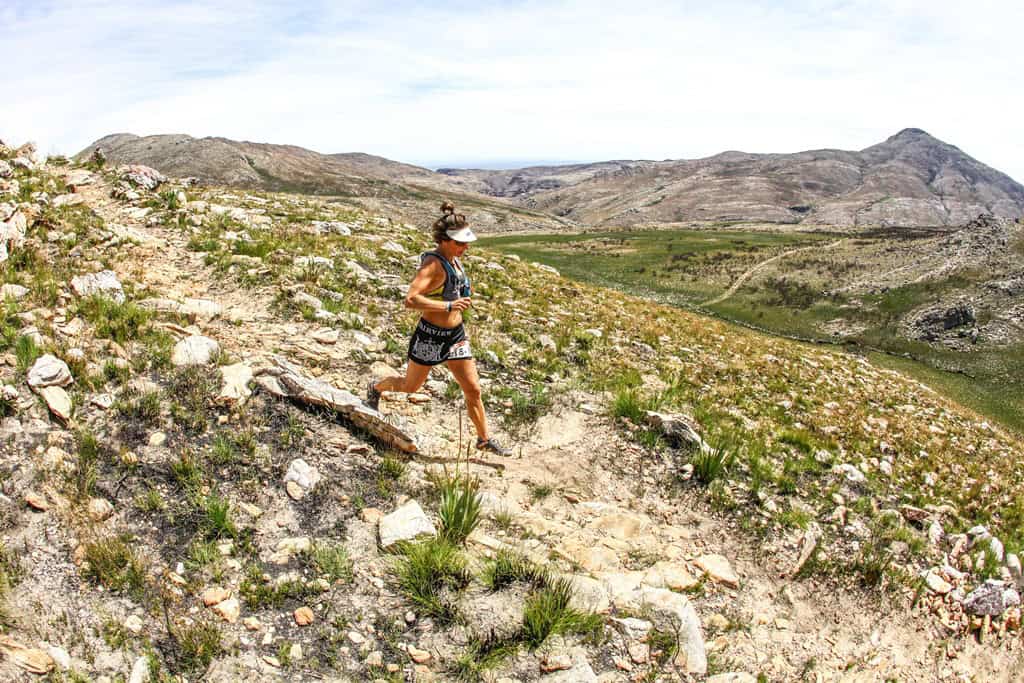Are warmer temperatures and longer days beckoning you outside and into the woods for some trail running? More than 8 million people in the U.S. are estimated to trail run every year, making it an ever-growing popular sport. Trail running offers the amazing cardio benefits you get from running as well as additional positive aspects you receive from spending time outdoors navigating uneven environments – stress relief and improved coordination and agility.
Most trail runners know that this type of adventurous workout doesn’t come without its own risks though. While early morning spider webs might seem the worst of it, the truth is that tree roots, trail debris, loose rocks, and slippery and slick outdoor terrain can land you in a world of hurt in an instant. Don’t miss this quick guide to common trail running injuries (and how you can prevent them):
Metatarsalgia
Do you sometimes feel like you have a tiny pebble in the sole of your foot? Weakness, discomfort, and even pain are hallmark symptoms of this common running injury that involves internal bruising and microscopic fractures in the metatarsal bones (in the ball of the foot).
The pounding strike of your foot against a variety of surfaces from compact dirt to rocks, gravel, and more can lead to a high-risk injury like metatarsal fractures. Left unmanaged, these fractures can form into full-on bone breaks that require extensive treatment.
Many trail running shoes come with cushioning “rock plates” in them which help protect against bruising when you run over rocks and small debris, but runners with existing symptoms of metatarsalgia may also consider wearing metatarsal pads that slip over your feet and provide extra cushion to the forefoot. Practicing good body mechanics when running, wearing shock-absorbing insoles, and icing and resting the affected foot sufficiently can also help minimize future issues associated with this condition.
Ankle Sprains
It only takes a split-second misstep to sprain or even more seriously tear one of the ligaments in your ankle joint during a trail run. When you land awkwardly or suddenly twist, roll, or turn your ankle, you can inadvertently overstretch the ligaments which hold this critical joint together. Immediate symptoms of a sprain may present with mild to severe swelling, pain, tenderness, and limited range of motion.
While you cannot wholly prevent ankle sprains, you can take steps towards preventing them when trailing running. First, make sure you are wearing proper-fitting shoes that support good ankle stability. Second, stretch and strengthen your ankles with simple exercises like ankle rolls and pointing and flexing your feets; this helps reinforce the joint. Third, learn how to gauge the dangers of your terrain. If the soil in the area where you live is clay, for example, a heavy rain might make things quite slick and muddy and you might want to avoid running that day.
If you do incur a sprain, experts recommend the R.I.C.E. method (rest, ice, compression, elevation) to most immediately address symptoms. Elevating a high ankle sprain and applying a compression wrap will relieve inflammation while icing and resting it will help the pain subside and facilitate the recovery process. Moderate to severe sprains should be seen by your doctor or sports medicine specialist to help rule out other injuries like a fracture or tendon rupture.
Tendinitis
The degree of workout you get from trail running is pretty phenomenal, especially when there are steeper inclines or hills involved. Not only does hill work help you burn more calories, it also engages more muscles than typical road running might. Trail runners want to be cautious though of over-stressing the soft tissues in the lower leg, like the Achilles tendon, with excessive hill work.
You will know your Achilles tendon (that runs down the back of your calf and connects to your heel bone) is aggravated when you start experiencing mild to severe heel pain and discomfort in your calf. You can quickly exacerbate this condition and incur more damage (like larger tears in the tendon) if you don’t take it easy.
When planning out your trail run, make sure that you are increasing mileage, terrain changes, and hill work gradually. Always wear proper running shoes that are not worn out, that provide good arch support, and which help keep the ankle joint aligned and stabilized. Longtime runners also recommend sufficient stretching and warming up of the lower leg muscles with a brisk walk or something like dynamic jump squats.
Additional trail running injuries might include IT band syndrome and plantar fasciitis.
